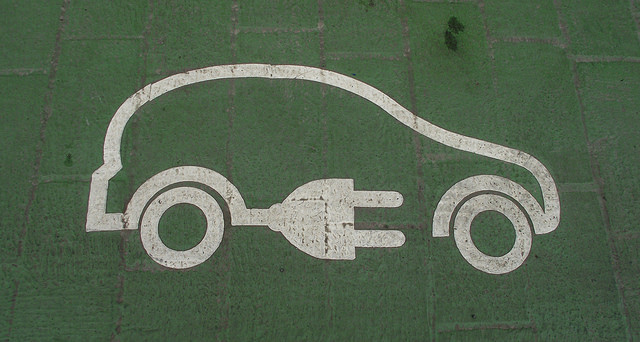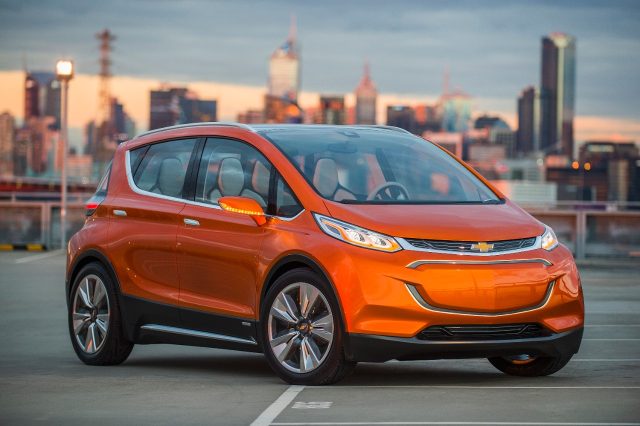
One of the more challenging jobs the auto industry has right now is explaining to consumers that the future isn't going to be like the past. We desperately need to reduce vehicle carbon emissions in order to avoid turning the planet into a hellscape, and that means turning to cars with some kind of energy storage other than hydrocarbons we've dug up from the ground and then distilled. That's where people get confused and the message stalls, a problem laid out in a recent report from the National Academy of Sciences.
For many decades cars have been simple things with internal combustion engines. They burned gasoline or sometimes diesel and occasionally even liquified natural gas. Sometimes they had turbochargers or superchargers to ram more air into the combustion chamber, and very occasionally that combustion chamber was something odd like a Wankel rotary engine. Now, the need to reduce carbon emissions and improve air quality means many more options when it comes to a vehicle's powertrain.
The array of options can be bewildering, says the National Academy of Sciences' report. Commissioned by Congress, it examines the hurdles to adopting plug-in electric vehicles (PEVs). The Academy splits PEVs into four classes: Long-range battery EV (BEV)s like the Tesla Model S, short-range BEVs like Nissan Leaf, range-extended plug-in hybrid EV (PHEV)s like the Chevrolet Volt (which drive on electric power most of the time), and minimal PHEVs like the plug-in BMW i8 (which can perform short trips on battery power alone).
One surefire way to get that message across is to give people an EV experience, according to Pam Fletcher, the chief engineer for EVs at General Motors (GM). "The people that have owned and lived with EVs can understand it, they've seen how the vehicles work for them, It's part of the learning curve and more people will understand it over time," she said. "It's hard to explain to people the benefits if they haven't had that experience."

Car design plays a part too. Back in 2011, a pair of economists got quite a lot of headlines with a paper, “Conspicuous Conservation: The Prius Effect and WTP [Willingness to Pay] for Environmental Bona Fides.” Steve and Alison Sexton argued that people bought Priuses over hybrid versions of conventional cars because the car's distinctive design signals their commitment to the environment to the world around them. But according to Fletcher, consumers have been telling GM just the opposite.
"When we launched the first-generation Volt we got a lot of feedback we weren't expecting," she told us. "Comments like 'we like this car, it doesn't look like a science project.' That message carried forward when we designed the second-generation Volt. We made it one of our priorities to make the car more mainstream-looking." This was also borne out by a recent poll AutoTrader conducted on their website, which found a majority of those who replied wanted EVs or hybrids to look more like conventional cars, not less.
Of course, consumer awareness isn't the sole reason we don't have more PEVs on the road. The lack of widespread public charging makes those vehicles much less appealing to city-dwellers who park on the street at night, compared to suburbanites with car ports and garages. We asked Britta Gross, head of Advanced Vehicle Commercialization Policy at GM, whether this doomed those urban drivers to life without an EV?
She pointed out that only three-to-four percent of charging was currently done in public (30 percent is at work, the vast majority is done at home, overnight). "It's almost the reverse triangle, if you look at what the media focus is compared to what's very important to an EV driver's life. "Fifty percent of drivers have access to an outlet at home, and we're not even close to that [level of EV adoption in the market]," she said. DC fast charging and public infrastructure are important, but Gross thought that expanding workplace charging probably represented better low-hanging fruit.
As you might expect given the Academy's role in advising the government, the report calls for stable federal funding for improving the energy density of batteries, as well as making batteries safer and more durable. It also calls for more research to understand the role of public charging infrastructure versus in-home or workplace charging, financial incentives to purchase PEVs (as well as research into what sorts of consumer incentives actually work), and the incorporation of charging infrastructure into building codes, among other recommendations.
reader comments
389